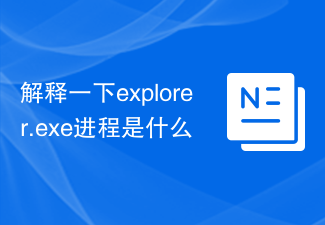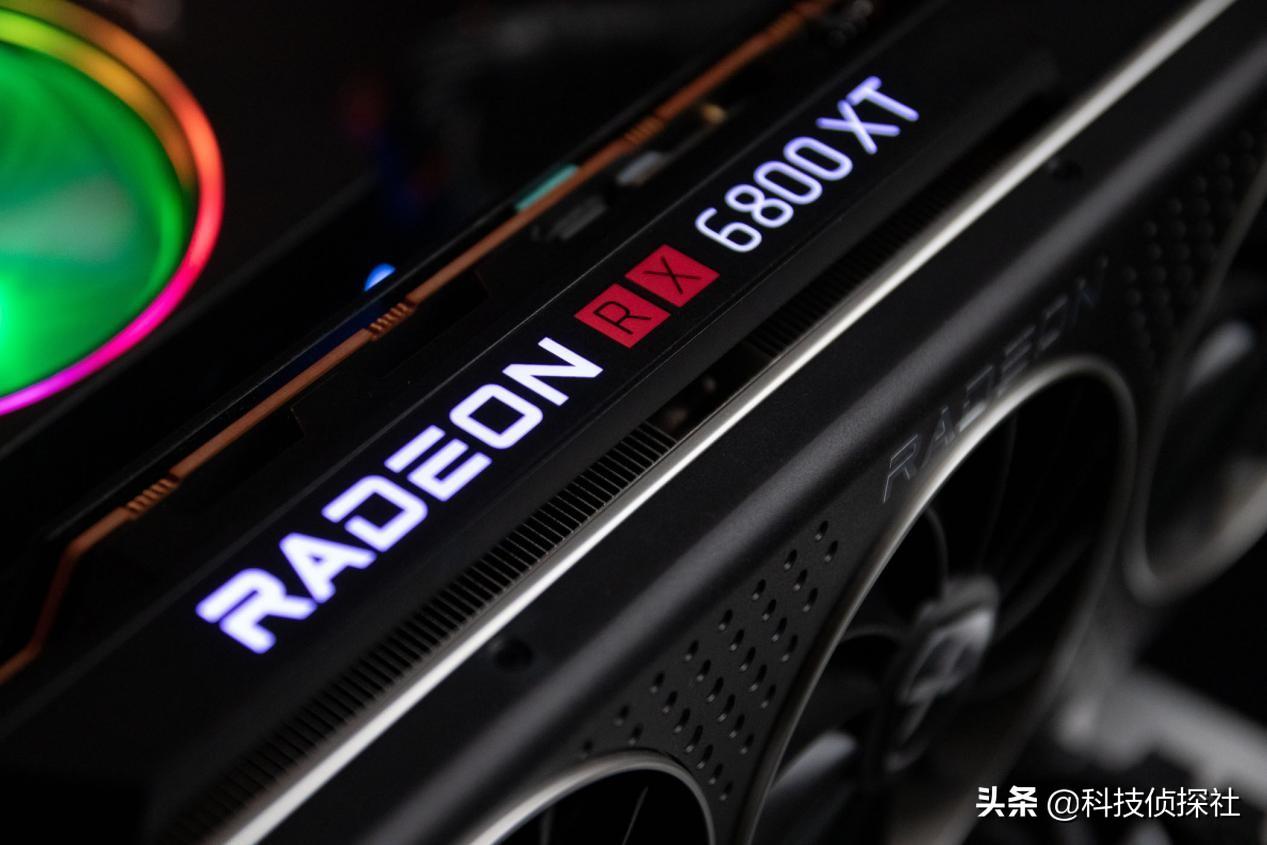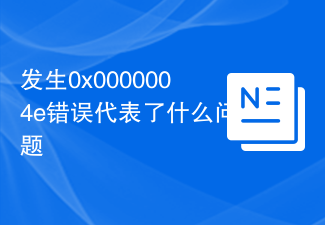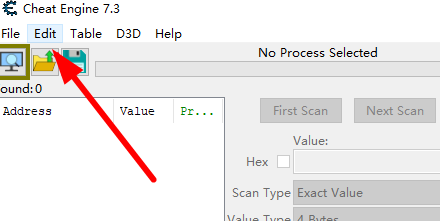 web3.0
web3.0 Annual overview of the Cosmos ecosystem: well-known projects emerge and core developers continue to grow
Annual overview of the Cosmos ecosystem: well-known projects emerge and core developers continue to growOriginal author: Xangle
Original compilation: Felix, PANews
2023 In 2016, the Cosmos ecosystem grew rapidly, and its unique interoperability and modular structure attracted a large number of developers and projects, bringing new possibilities to blockchain technology.
This article will explore the major changes, technology updates, and new projects within the Cosmos ecosystem in 2023. At the same time, there will also be an in-depth study of technological advancements and market changes in the Cosmos ecosystem, as well as Cosmos' redefinition of the existing blockchain paradigm.
1. Infrastructure
1.1 Major update of Cosmos SDK
The modules managed by Cosmos SDK are mainly used to develop chains in the Cosmos ecosystem. Below are the major updates to the SDK released in 2023.
Version 0.47 Update
CometBFT has been upgraded to the latest version 0.47, as a new branch of the Tendermint consensus engine, now included in the Cosmos SDK. This update does not introduce major changes and is mainly designed to support the smooth migration of blockchains previously using Tendermint to CometBFT.
Version 0.50 Update
ABCI 2.0: ABCI is the interface responsible for data exchange between the consensus engine and the application layer responsible for different functions on the chain. The consensus engine CometBFT (Tendermint) is responsible for block generation and transaction broadcasting, which is the process of determining the order of transactions. Due to the design of ABCI, there are limitations in processing transactions in the required order in the mempool. To overcome this problem, ABCI 2.0 adds a new process called "PrepareProposal" to determine the order of transactions in the mempool and pass it to CometBFT.
Optimistic Execution: In the previous Cosmos SDK, all validators needed to reach consensus to execute transactions and submit the results to the chain. This move slowed down the execution of transactions, and to overcome this issue, a feature called “Optimistic Execution” was introduced. This feature allows transactions to be executed and submitted without the consent of all validators, thereby increasing transaction throughput.
SDK Modules: The Cosmos SDK contains various modules for application development. Previously, each module's update followed the updated version of the SDK, so it was difficult to track the update history of each module. In version 0.50, version control of each module is implemented independently, making it easier to track update records. In addition, the data storage model Store and IAVL have been decoupled so that they can be updated independently.
1.2 Cosmos on Metamask
Since there are multiple chains in the Cosmos ecosystem, each chain has an independent address even if the mnemonic words are the same. Although the Keplr wallet is currently used for integration and management, it requires the use of a new wallet application, providing a poor user experience and raising the barrier to entry.
Cosmos is working on projects to solve this problem. Against this background, Metamask implements full support for Snap, allowing custom features to be added to Metamask. Transactions can now be created on Cosmos-based chains, including Leap wallets. In other words, the technical foundation has been laid, and users familiar with EVM-based chains can be more easily attracted to the Cosmos ecosystem.

##Leap Wallet(https://cosmos.leapwallet.io/portfolio/overview)
1.3 MultiVM
Unfortunately, the Cosmos SDK does not support virtual machines for smart contracts. Therefore, several projects have emerged to develop virtual machines that have been verified and used in other blockchains, or there are projects to develop virtual machines unique to the Cosmos ecosystem. Some people have tried to integrate various virtual machines (such as EVM, WasmVM, SolanaVM, MoveVM, etc.) with the Cosmos SDK, and have highly praised some virtual machines. If more commonly used virtual machines are supported, it will be easier for dApp developers to enter the Cosmos ecosystem. 2. ProjectsThe following are some interesting and eye-catching projects that will appear in the Cosmos ecosystem in 2023.2.1 Celestia
The most popular project in the Cosmos ecosystem in 2023 is undoubtedly Celestia. Celestia is a representative modular blockchain project that roughly divides the functions of the blockchain into four parts:Execution: The ability to process transactions and change chain state.
Settlement: Verify transactions processed by the computing layer.
Data Availability: Stores information from transactions and blocks and ensures it is always available.
Consensus: The ability to determine transaction validity or the order in which transactions are included in a block
Among these features, Celestia focuses on Data availability. The combination of Celestia and the word "L2" triggered the Rollup craze in the Cosmos ecosystem. For this purpose, a framework called "Rollkit" has been created and supported, which supports ABCI between Celestia and Cosmos SDK.

##Celestia Rollkit ( https://docs.celestia.org/developers/rollkit )
Rollkit replaces Cosmos’ consensus engine Tendermint (more precisely CometBFT) and allows Celestia and the Cosmos SDK to communicate directly. Rollkit allows Sovereign Rollup by aggregating transactions in a block and leveraging Celestia’s consensus engine and data availability.2.2 Skip Protocol
Skip Protocol is a project with the vision of "sovereign transaction infrastructure for sovereign blockchains". This protocol can improve the user experience of sovereign blockchains, make the order of transaction processing transparent, prevent malicious MEV, and improve the quality of the network. Among user experience improvements, the project aims to solve the problem of the Inter-Blockchain Communication (IBC) protocol. IBC is a protocol for trading assets between different chains within Cosmos. In order to transfer assets via IBC, a communication "channel" must be created, and each channel needs to be given a unique ID for each connected chain. The picture below shows an example of ETH being sent from Axelar to Terra2.
##Skip API ( https://api-docs.skip.money/docs/ibc-routing-algorithm ) In addition, Skip proposes an optimal routing algorithm for delivering assets in the Cosmos ecosystem and provides a better user experience by determining the Denomination of assets.
Skip Protocol also provides various APIs that are very useful for developing blockchains based on the Cosmos SDK, such as multi-chain transaction tracking. Skip also proposed to the community that Skip’s functions should be included in the Cosmos SDK to contribute to ecological development.

2.3 Other Projects
Sei
Sei is positioned as a chain that specializes in transactions and aims to become a fast Layer1 instead of Rollup is also a major trend in blockchain development in 2023. Sei focuses on improving the performance of the chain by leveraging various technologies.
Injective
Injective is committed to building a blockchain ecosystem specifically for financial applications. Injective has established partnerships with Figment and Binance, and supports various dapps such as Helix and Hydro to join the Injective ecosystem.
dYdX
dYdX is considered the most successful DEX and has been successfully migrated to Layer1 using the Cosmos SDK.
dYdX strengthens governance through its own token.Stride
Stride is a liquidity staking protocol similar to Ethereum Lido. In the Cosmos ecosystem, liquidity staking is inherently difficult because assets are scattered across multiple chains. Stride aims to achieve multi-chain liquidity staking in the Cosmos ecosystem by leveraging ICA (Inter-Chain Account), ICQ (Inter-Chain Query) and ICS (Inter-Chain Security).
Coreum
Coreum is an enterprise-oriented Layer1 blockchain that supports Wasm-based smart contracts, RWA tokenization, NeoBanking applications, and more.
3. On-chain performance
3.1 Development activity

Although development activity on the Cosmos network remains healthy overall , but Q2 in 2023 will have the largest number of smart contract deployments (2226) and the highest growth rate (21.4%). The number of core developers is gradually increasing, which is also a sign of active ecological infrastructure construction.
Meanwhile, the number of smart contracts deployed in Q2 and Q3 last year was 2,226 and 1,777 respectively, up from 1,701 in the fourth quarter. While development activity did slow down compared to the previous two quarters, activity levels continue to hold up given the decline at the end of Q4.
3.2 Network Activity

The most notable aspect of Cosmos network activity is that development activity in Q2 and Q3 translated into Q4 overall ecological growth. As shown in the figure, TVL in the Cosmos ecosystem continued to decline in Q3, but then increased significantly in Q4.
The explosive growth of TVL in the Cosmos ecosystem in the fourth quarter can be attributed to two factors. The first was the influx of liquidity in Layer 1 narratives in mid-October. In the second half of the year, a large amount of funds flowed into the Layer 1 ecosystem, and the explosive performance of Solana, Cosmos, and Avalanche drove the overall TVL increase.
In addition, the developer-friendly infrastructure environment, including the Cosmos SDK, and the huge blockchain connection network built on the IBC ecosystem have brought practical benefits to users. By observing the TVL trend, you will find that this is not just a temporary increase, but a continuing trend. Market satisfaction with the protocol's maturity may drive Layer 1 liquidity, boost Cosmos' development and reduce user churn.


Compared with the worst-performing Q3 (1,470,050), the number of active wallets in Q4 also increased by nearly 55%, reaching 2,280,335. Reflecting the vitality of the ecology. The interoperability of the Cosmos IBC ecosystem drives increased on-chain activity.
In addition, judging from the TVL trends of key protocols in the IBC ecosystem, the continued hype of protocols based on the Cosmos SDK in the second half of the year also played a role in revitalizing the ecosystem.
3.3 Network Security

Cosmos currently has a total of 180 active validators. The top 9 validators hold 40.89% of the ATOM supply. There are currently 2.44 billion ATOMs pledged on Cosmos, accounting for approximately 65% of the total supply.
4. Conclusion
2023 is a milestone year for the Cosmos ecosystem, witnessing the development and major changes of several projects. These changes show that Cosmos is not just an area of blockchain technology, but is driving innovation across the entire blockchain ecosystem.
Celestia, Skip Protocol and other well-known projects demonstrate the diversity and flexibility of the Cosmos ecosystem and how it continues to evolve. These projects pioneer new use cases for blockchain technology and help create more efficient, user-friendly blockchain environments.
The growth and development of the Cosmos ecosystem has increased excitement about the future of blockchain technology. Opening the door to new opportunities for developers, users and investors, and paving the way for continued innovation for years to come. It is expected that the Cosmos ecosystem will continue to maintain this positive trend in the next few years, and new technical challenges and opportunities will continue to emerge in the process.
The above is the detailed content of Annual overview of the Cosmos ecosystem: well-known projects emerge and core developers continue to grow. For more information, please follow other related articles on the PHP Chinese website!
 解释一下explorer.exe进程是什么Feb 18, 2024 pm 12:11 PM
解释一下explorer.exe进程是什么Feb 18, 2024 pm 12:11 PMexplorer.exe是什么进程在我们使用Windows操作系统的时候,经常会听到一个名词"explorer.exe".那么,你是否好奇这个进程到底是什么?在本文中,我们将详细解释explorer.exe是什么进程以及其功能和作用。首先,explorer.exe是Windows操作系统的一个关键进程,它负责管理和控制Windows资源管理器(Window
 r5 5600x最高能带动什么显卡 最新用5600X搭配RX6800XT性能Feb 25, 2024 am 10:34 AM
r5 5600x最高能带动什么显卡 最新用5600X搭配RX6800XT性能Feb 25, 2024 am 10:34 AM10月29日,AMD终于发布了备受用户期待的重磅产品,即基于全新RDNA2架构的RX6000系列游戏显卡。这款显卡与之前推出的基于全新ZEN3架构的锐龙5000系列处理器相辅相成,形成了一个全新的双A组合。这一次的发布不仅使得竞争对手“双英”黯然失色,也对整个DIY硬件圈产生了重大影响。接下来,围绕笔者手中这套AMD锐龙5600X和RX6800XT的组合作为测试例子,来见证下现如今的AMD究竟有多么Yse?首先说说CPU处理器部分,上一代采用ZEN2架构的AMD锐龙3000系列处理器其实已经令用
 内存频率和时序哪个对性能影响更大Feb 19, 2024 am 08:58 AM
内存频率和时序哪个对性能影响更大Feb 19, 2024 am 08:58 AM内存是计算机中非常重要的组件之一,它对计算机的性能和稳定性有着重要影响。在选择内存时,人们往往会关注两个重要的参数,即时序和频率。那么,对于内存性能来说,时序和频率哪个更重要呢?首先,我们来了解一下时序和频率的概念。时序指的是内存芯片在接收和处理数据时所需的时间间隔。它通常以CL值(CASLatency)来表示,CL值越小,内存的处理速度越快。而频率则是内
 发生0x0000004e错误代表了什么问题Feb 18, 2024 pm 01:54 PM
发生0x0000004e错误代表了什么问题Feb 18, 2024 pm 01:54 PM0x0000004e是什么故障在计算机系统中,故障是一个常见的问题。当计算机遇到故障时,系统通常会因为无法正常运行而出现停机、崩溃或者出现错误提示。而在Windows系统中,有一个特定的故障代码0x0000004e,这是一个蓝屏错误代码,表示系统遇到了一个严重的错误。0x0000004e蓝屏错误是由于系统内核或驱动程序问题导致的。这种错误通常会导致计算机系统
 DaVinci Resolve Studio 已支持AMD显卡的AV1硬件编码Mar 06, 2024 pm 10:04 PM
DaVinci Resolve Studio 已支持AMD显卡的AV1硬件编码Mar 06, 2024 pm 10:04 PM最近新消息,lackMagic目前推出了达芬奇DaVinciResolveStudio视频编辑软件的18.5PublicBeta2公测版更新,为AMDRadeon显卡带来了AV1编码支持。更新到最新版本后,AMD显卡用户将能够在DaVinciResolveStudio中利用硬件加速来进行AV1编码。尽管官方并未具体指明支持的架构或型号,但预计所有的AMD显卡用户都可以尝试这一功能。2018年,AOMedia发布了全新的视频编码标准AV1(AOMediaVideoCodec1.0)。AV1是由多家
 Planet Mojo:从自走棋游戏Mojo Melee建起Web3游戏元宇宙Mar 14, 2024 pm 05:55 PM
Planet Mojo:从自走棋游戏Mojo Melee建起Web3游戏元宇宙Mar 14, 2024 pm 05:55 PM成立于上个加密周期的热门元宇宙游戏项目们正在加速扩张。3月4日,Web3游戏元宇宙平台PlanetMojo宣布了其游戏生态的多个重要动态,包括预告即将推出跑酷游戏GoGoMojo、旗舰自走棋游戏MojoMelee推出新赛季“战之道”,以及为庆祝新赛季与MagicEden合作推出的首个ETH系列“WarBannerNFT”。另外,PlanetMojo还透露,他们计划在今年晚些时候推出MojoMelee的Android和iOS移动版本。这个项目在2021年底启动,经过在熊市中近两年的努力建设,即将在
 Cheat Engine如何设置中文?Cheat Engine设置中文方法Mar 13, 2024 pm 04:49 PM
Cheat Engine如何设置中文?Cheat Engine设置中文方法Mar 13, 2024 pm 04:49 PMCheatEngine是一款游戏编辑器,能够对游戏的内存进行编辑修改。但是它的默认语言是非中文的,对于很多小伙伴来说比较不方便,那么CheatEngine怎么设置中文呢?今天小编就给大家详细介绍一下CheatEngine设置中文的方法,希望可以帮助到你。 设置方法一 1、双击打开软件,点击左上角的“edit”。 2、接着点击下方选项列表中的“settings”。 3、在打开的窗口界面中,点击左侧栏中的“languages”
 Microsoft Edge在哪设置显示下载按钮-Microsoft Edge设置显示下载按钮的方法Mar 06, 2024 am 11:49 AM
Microsoft Edge在哪设置显示下载按钮-Microsoft Edge设置显示下载按钮的方法Mar 06, 2024 am 11:49 AM大家知道MicrosoftEdge在哪设置显示下载按钮吗?下文小编就带来了MicrosoftEdge设置显示下载按钮的方法,希望对大家能够有所帮助,一起跟着小编来学习一下吧!第一步:首先打开MicrosoftEdge浏览器,单击右上角【...】标识,如下图所示。第二步:然后在弹出菜单中,单击【设置】,如下图所示。第三步:接着单击界面左侧【外观】,如下图所示。第四步:最后单击【显示下载按钮】右侧按钮,由灰变蓝即可,如下图所示。上面就是小编为大家带来的MicrosoftEdge在哪设置显示下载按钮的

Hot AI Tools

Undresser.AI Undress
AI-powered app for creating realistic nude photos

AI Clothes Remover
Online AI tool for removing clothes from photos.

Undress AI Tool
Undress images for free

Clothoff.io
AI clothes remover

AI Hentai Generator
Generate AI Hentai for free.

Hot Article

Hot Tools

Dreamweaver Mac version
Visual web development tools

SublimeText3 Linux new version
SublimeText3 Linux latest version

SublimeText3 Chinese version
Chinese version, very easy to use

SublimeText3 English version
Recommended: Win version, supports code prompts!

ZendStudio 13.5.1 Mac
Powerful PHP integrated development environment






